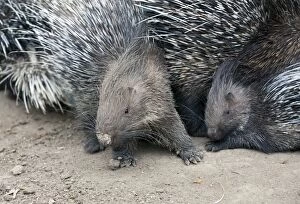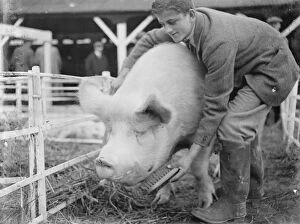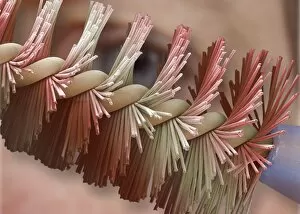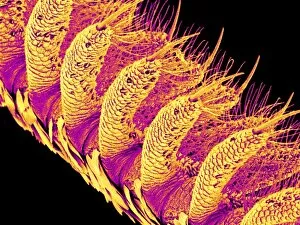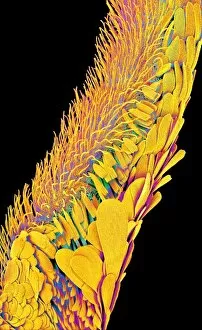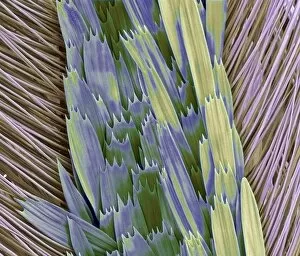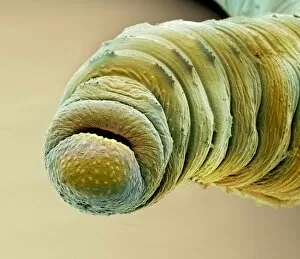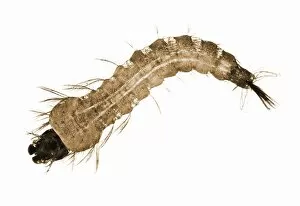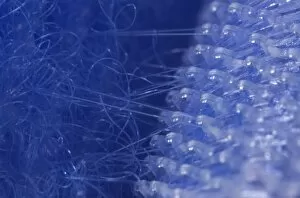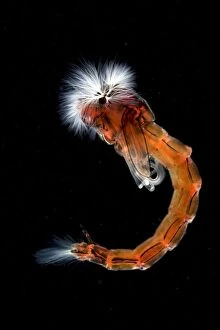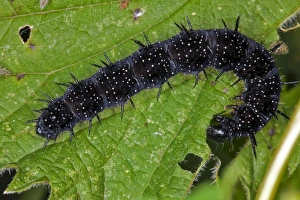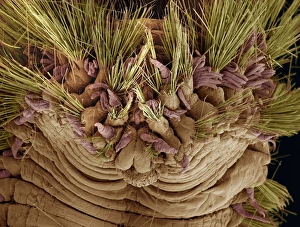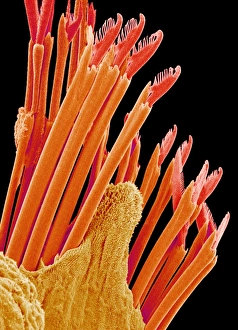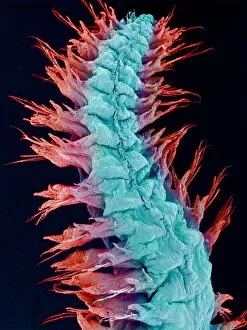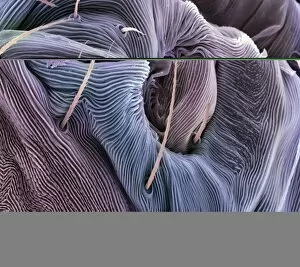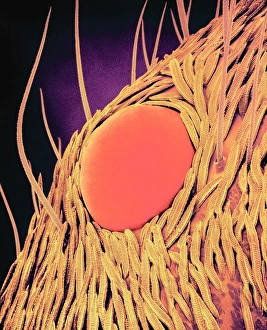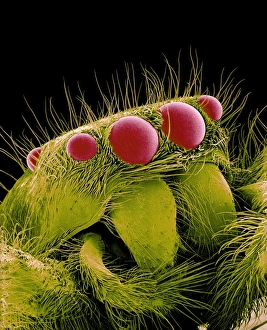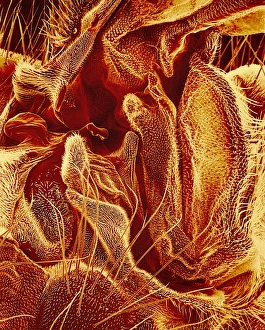Bristles Collection (page 2)
"Bristles: Nature's Versatile Wonders" The compound eye of a fly, captured in stunning detail by the SEM Z340 / 0698
All Professionally Made to Order for Quick Shipping
"Bristles: Nature's Versatile Wonders" The compound eye of a fly, captured in stunning detail by the SEM Z340 / 0698, reveals the intricate arrangement that enable these insects to navigate their surroundings with precision. Delicate and graceful, the moth antenna under the SEM showcases an array that serve as sensory receptors, allowing them to detect pheromones and locate potential mates. A man brushing his teeth diligently highlights the importance in our daily hygiene routine, ensuring a thorough clean for a healthy smile. Toothbrushes have come a long way since ancient times. Advertisements throughout history showcase innovative designs and features aimed at providing optimal oral care through carefully crafted bristle arrangements. Witness skilled artisans making shaving brushes with meticulous attention to detail – each individual bristle carefully selected and arranged to create a luxurious grooming experience. Step back in time with Mappin & Webb's dressing table services from 1932; elegant hairbrushes adorned with exquisite bristles offer both functionality and timeless beauty for discerning individuals. Curiosity meets playfulness as a tabby kitten engages with a sweeping brush – its tiny paws batting at the soft bristles while exploring its surroundings in adorable mischief. In Australia's scrublands, observe the wild short-beaked echidna foraging for food using its specialized snout covered in sharp spines or "bristles, " showcasing nature's ingenious adaptations for survival. Through vibrant lithography artistry, "The Single Man and The Married Man" depicts contrasting lifestyles symbolized by two distinct brushes – one well-worn but solitary, while another stands tall amidst family life's demands. The Sweating System lithograph humorously portrays an exaggerated scene where perspiring individuals desperately seek relief from heat waves using unconventional methods like giant fan-shaped brushes.

